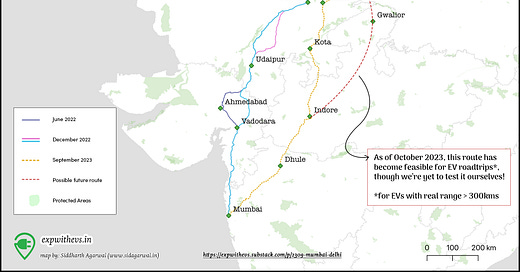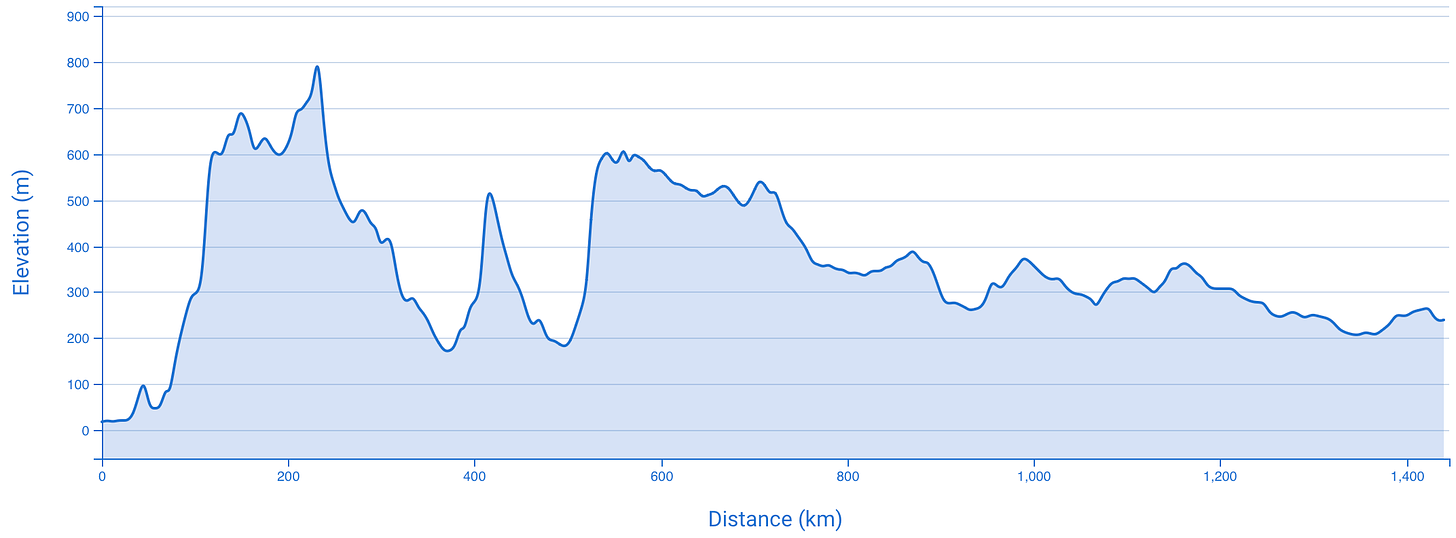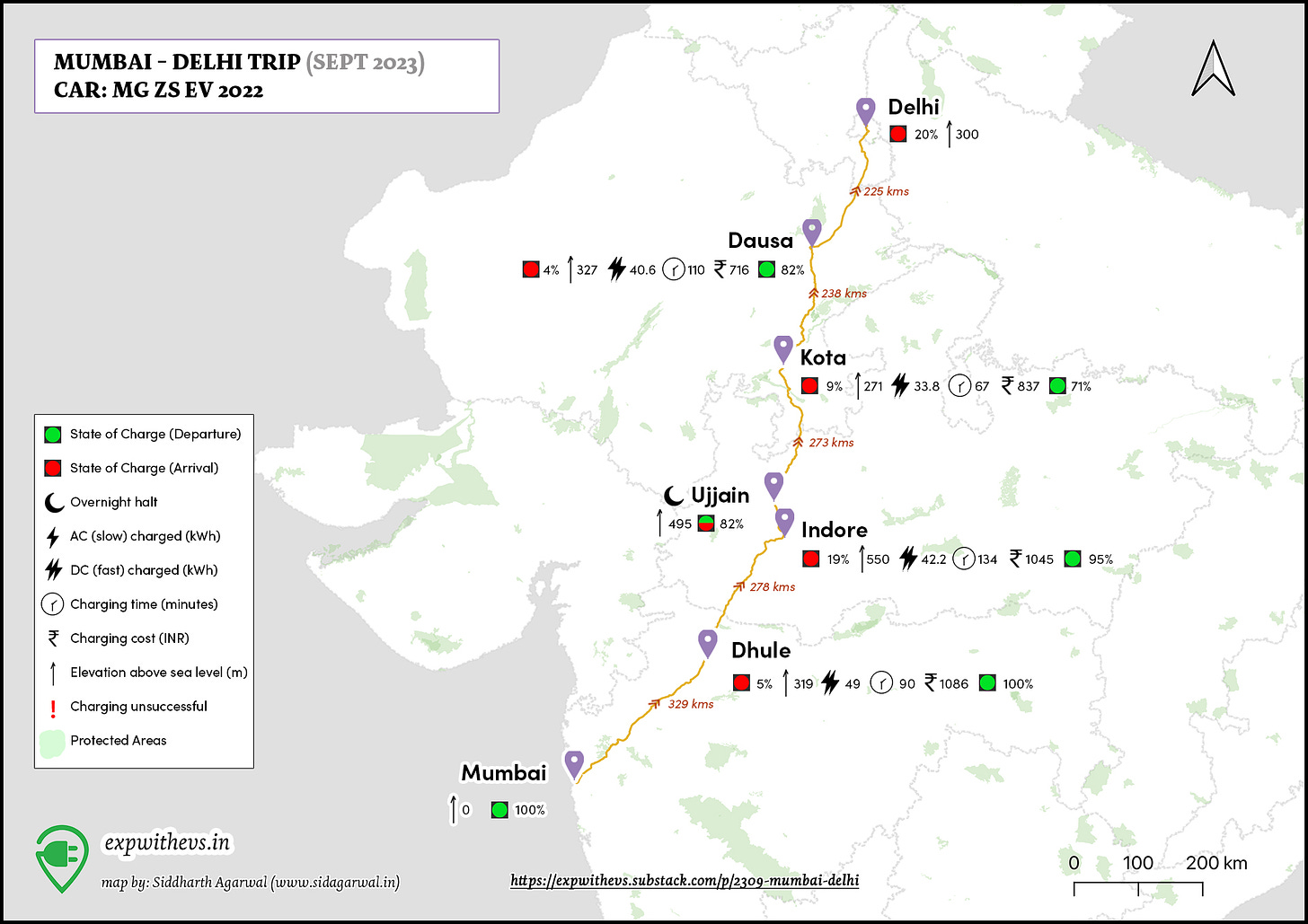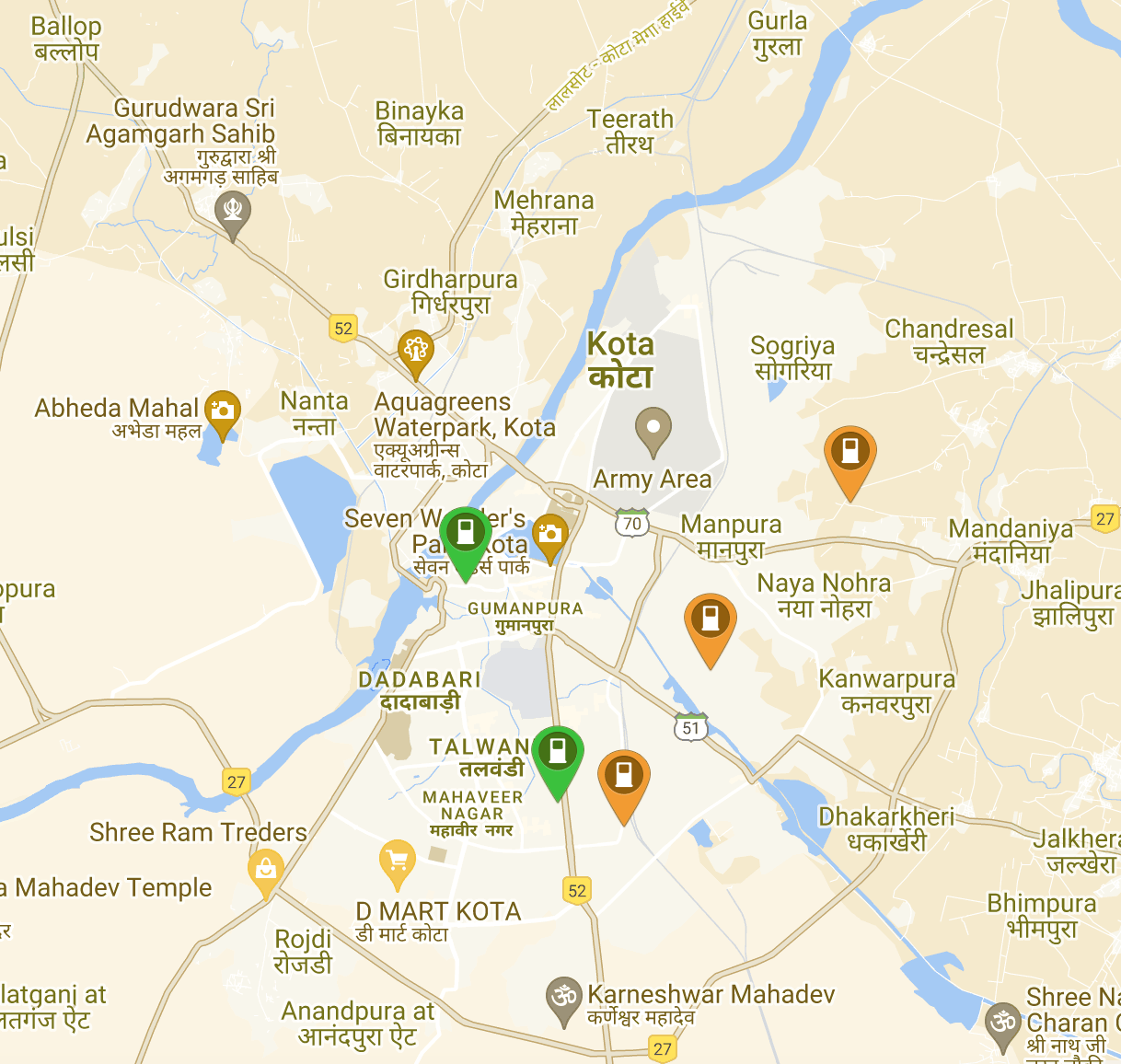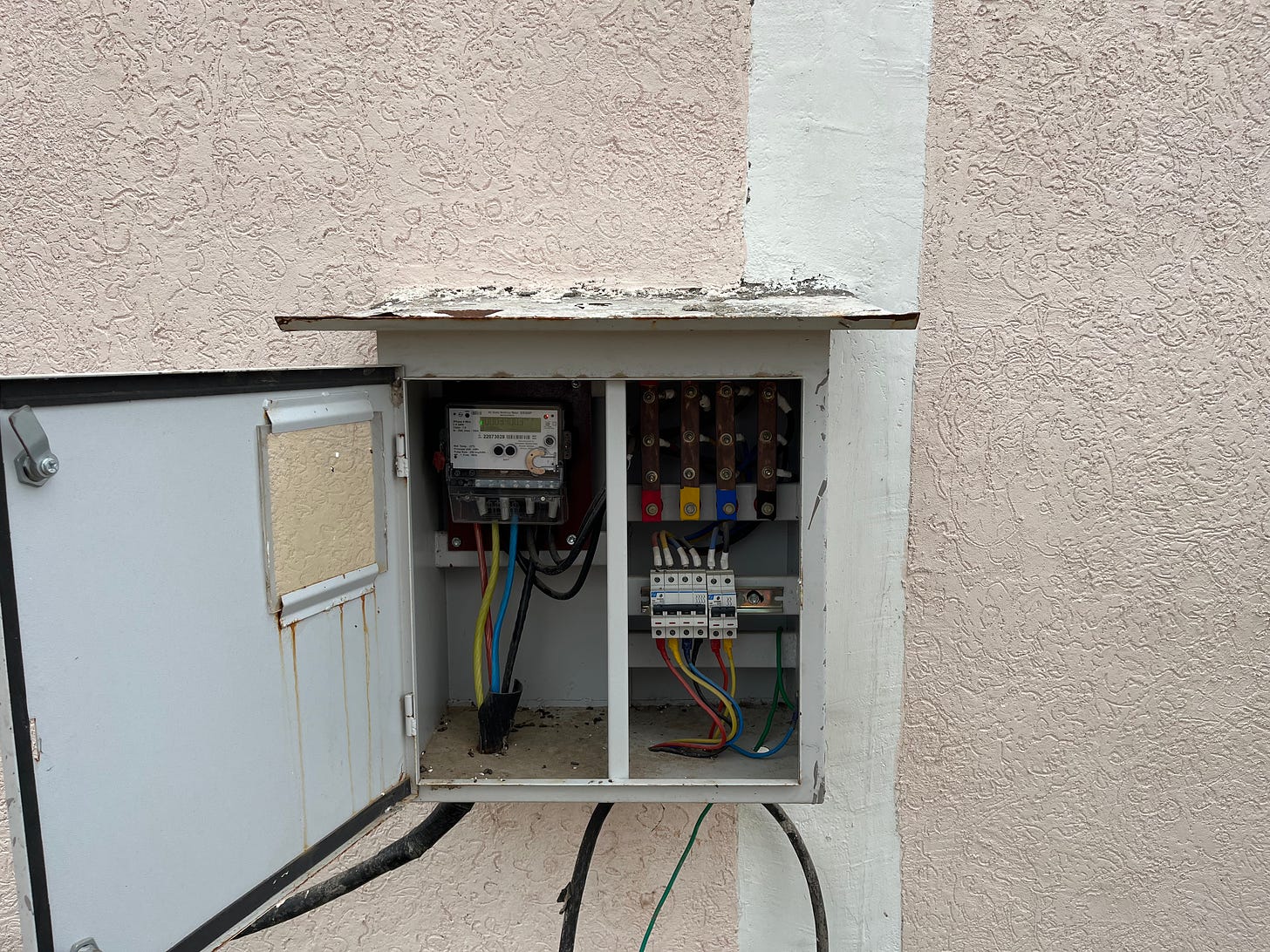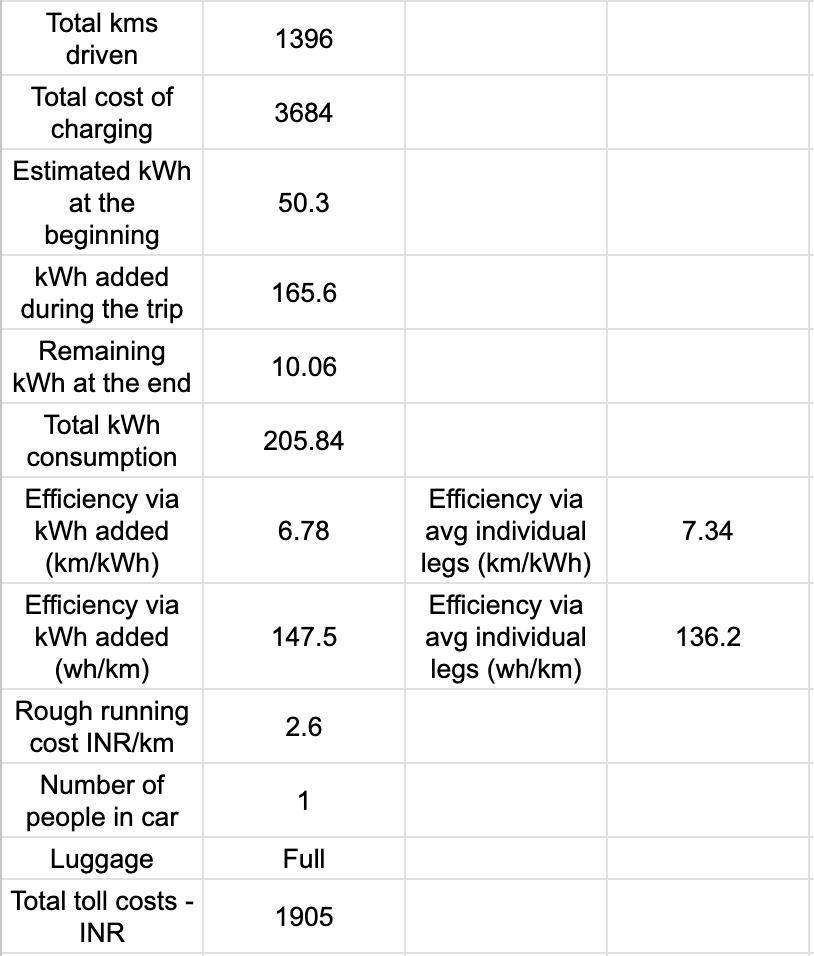2309 Mumbai to Delhi via Indore
You can do Mumbai Delhi via Indore. Delhi Mumbai expressway is amaze. Also, cattle.
Housekeeping
It is time for another road trip article! I’ve been doing quite a few road trips but life has just been busy. That’s why the articles are slightly delayed. In personal update, I have moved to Delhi temporarily and this blog documents my road trip from Mumbai to Delhi.
After moving here, I did a Delhi Jaipur day trip via Delhi Mumbai Expressway both ways. I also did a small off-road road-trip to a village on a mountain top north of Rishikesh. The data and trip report will be out soon. Subscribe to be the first ones to read about it.
I am also doing an audit project for a large charge point operator’s chargers. I’ll share more details when I can.
My work life has also been busy. Indoor air quality in our metros has been deteriorating at a rapid pace. Majority of the reasons are construction dust, and vehicular emissions. Mumbai is in headlines this year, much earlier than the usual ‘season’ of bad air quality. Delhi isn’t far behind. I recommend getting your indoor air quality checked at the earliest. The test starts from a mere INR 699 and is available in all major metro cities in India.
By providing good air quality to employees, CXOs can expect lesser employee medical leaves. You can also get a test done at your home if you have elderly parents or young children or if you are dealing with breathing related issues. Air quality is known to impact them the most. Reach out to me on activebuildings.io to get your air tested today.
Disclosure - I am the cofounder of ActiveBuildings.
Coming back to the report, I’ve previously done the Mumbai to Delhi road trip twice. The first trip was in June 2022 via Ahmedabad (1445 km). Next trip in December 2022, I skipped Ahmedabad and went directly to Udaipur from Vadodara (1436 km). It is a testimony to the improving charging infrastructure in our country. To push the envelope further, this time in early September 2023, I chose the 1396 km Mumbai - Indore - Kota - Dausa - Delhi route.
The final iteration of this route is from Mumbai - Indore - Gwalior - Agra - Delhi. There weren’t many reliable charging points between the 500 km stretch between Indore to Gwalior in early Sept 2023. Today, there are chargers on this route and this journey can be attempted in the 2022 MG ZS EV.
After enjoying the infrequent monsoons in Mumbai, I mentally prepared to travel to Delhi. By being based in Delhi, it allows me to travel further north in the Himalayas. It also allows me to compare the car’s range in colder Delhi weather as compared to not so cold Mumbai weather. This road trip was done on 8th and 9th Sep 2023. It rained continuously on both days, which kept reminding me of my home, Mumbai.
As usual, if you’d like to skip the text, you can dive into the data here.
If you are one for the visuals, check out my charging stations playlist and the Mumbai Delhi playlist on YouTube. The charging stations playlist has videos of charging stations that I’ve visited during my trips. Enjoy!
The Planning
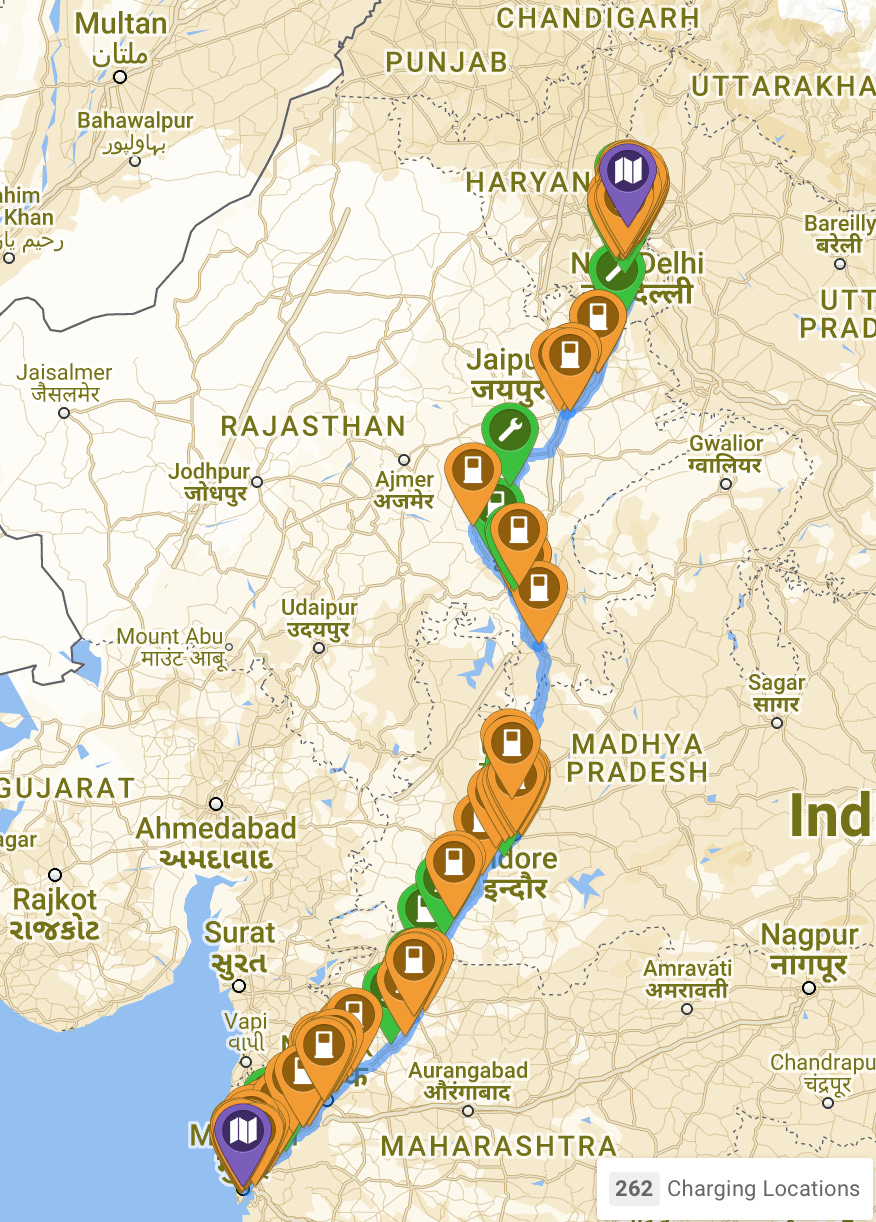
The overall planning for this route was slightly challenging. The first part of the route till Indore is well travelled and documented. I’ve covered it once and my parents have done it once. The second leg was challenging because of fewer reliable chargers from Indore to Kota to Delhi via Dausa.
My original plan included me stopping for the night at Jhalawar. Jhalawar is the place with the first charger after a break in the middle. It has a BPCL charger. 55% of their network is down, so the chargers can be unreliable. I did monitor it for a few days before my trip and it showed online. I would have preferred to top up less at Indore and reach Jhalawar by nightfall.
My overnight stop was going to be at a relative’s house in Ujjain. Previously, my parents had slow charged at their house, but I chose not to. I would only get around 30-35% charge for an 8h rest period. I also wanted to show that it is possible to do this trip without an overnight charge too. I would still recommend what Bjorn always says - ABC - Always Be Charging. We do not have enough destination charging in the country. More on that in a separate post. My charging stops after Indore were fixed. I would have to stop there irrespective of my state of charge to top up my car.
The elevation on this route was in my favour. The initial ascend was on a route I was familiar with. I was going to keep descending till I reached my final destination. It is also important to note the local minima and maxima when looking at the elevation chart. At 0 km the local minima is 0 m. At ~220 km, it is 800 m, also the global maxima. The elevation then drops over the next 150 km by 600 m. There’s a gain and a drop of 300 m over the next 100 km. The elevation finally reaches back to 600 m, just around the 550 km mark. Then the elevation gradually drops down to 300 m over the next 800 km.
Let’s go!
Mumbai - Dhule
My trip was split over two days. The first day, I managed to cover 660 km and the rest, 736 km, the next day. If I didn’t have a place to stay in Ujjain, I would have covered another 30-40 km on the first day, making it close to an even 700 km. I don’t recommend driving more than 700 km when driving solo on Indian highways. The average speed is under 60 kmph, which is already around 12h of driving. Including rest stops, stretching and charging breaks, the total time would easily cross 15h.
My first planned stop for the day was in Dhule. I’ve previously charged at Statiq’s Hotel Bliss County charger, just off the highway. I had previously camped overnight here in my car and knew the property well. However, the charger was no longer on the Statiq app. Thus I dropped the plan to charge there.
I reached out to the Statiq team and they said
“The charger at Dhule is non functional cos of some re-negotiation with the host. We had some issues with the host and hence its being re-negotiated. Our team is in touch with the host and is trying to get it resolved asap.”
There are also a bunch of BPCL chargers before reaching Dhule. BPCL would be my last choice for the reasons mentioned previously. Most BPCL chargers are only 30kW and my car can easily take more, upto 60kW at peak. The only other viable alternatives were ChargeZone and EVPump. I preferred to decide based on the amenities nearby.
When I crossed Nashik, I checked the ChargeZone app and found out that the charger is not working. I called up their helpline to re verify if the charger was indeed down. The executive confirmed it. He also said that it wasn’t the case of just an emergency button being pulled. So, I had no option but to rely on EVPump. I could have tried out the offline Masstech charger or the BPCL chargers, but the 60kW EVPump charger, right off the highway, with a hotel right next to it attracted me.
EVPump is a small CPO. It has a bunch of chargers in north Maharashtra and has added 80% more chargers over the past 6 months. Source.
To avoid disappointment yet again, I called up EVPump support and they confirmed that the charger was online and capable of providing 60kW via a single gun. I was delighted. I plugged in Hotel New Nalanda on my Google Maps and navigated to the charger. I did not pay attention while navigating and reached another Hotel New Nalanda in the middle of Dhule city. This was my faux pas and I should have been more careful while navigating.
I drove 327 km to reach the Dhule charger. In my 2022 July trip to Indore, I had reached Dhule with 12% SoC covering 317 km. On extrapolating the July data, for 327 km, I arrive at ~10% SoC. This includes an elevation gain of around 300 m. My highway speeds are constant at just under 80 kmph. Both the July 2022 and Sept 2023 trips had constant rains along the way.
Assuming a similar impact of rain, this difference in arrival can possibly be explained by battery degradation of around 5%. I had come to a similar conclusion in my Mumbai - Hyderabad - Mumbai road trip in Feb 2023. I am glad that the degradation hasn’t gotten worse in the last 6 months.
Charging at EVPump’s charger in Dhule, Maharashtra
It was raining in Dhule. The charger has a very small roof, just enough to cover the body of the charger. If the roof was extended, it would make it easy for consumers to get out of the car and plug in the gun without getting drenched. I loaded up my wallet just enough to allow me a full top up to 100%. The CPO billed me for ~49 units of electricity to charge till 100%. The advertised battery capacity of the car is 50.3 kWh. 49 units would correspond to ~97.5%.
The additional 2.5% can be a combination of the following :
a) Charging loss (partial or entire)
b) The spare battery buffer was charged, which translates to somewhere close to 1.25 kWh.
c) The car’s BMS was not calibrated and the 5% shown was actually 2.5%.
My guess is that it is more of option b) than anything else.
I reached the charger just before 11 AM on a Friday and the Bar cum Restaurant wasn’t open. Unfortunately, I was not able to try out their food. I used the washroom and it wasn’t clean. The staff at the restaurant mentioned that their washrooms are cleaned just before noon. I was just glad that I could get to use the washroom.
Dhule - Ujjain
This section of the trip also had rain, wind and elevation gain of another 300 m. The roads were beautiful and the drive was pleasurable. I planned to meet with Garvit in Indore. Garvit works at TeslaClubIndia (link), an EV advocacy group. I also co host podcasts (link) with him for TeslaClub India. He was travelling for a few hours to reach Indore. The easiest point for him to meet me was near the Park Hotel Tata PEZC charger at Indore.
P.S. : Has great washrooms, an expensive restaurant and no other options nearby.
Charging at Park Hotel - Tata Power
Park Hotel has one 7.2kW AC charger and a 30kW DC fast charger. I naturally plugged my car in the fast charger as I was at 12% SoC. I wanted to top up my car as much as I could, so that I didn’t have to stop before I reached Kota, my next charging stop, the following afternoon.
Garvit travelled by an electric bus service run by Nuego. We had some food, spoke about electric vehicles and discussed OEM plans for battery electric vehicles. He is a passionate young 2024 graduate looking to work in the electric vehicle industry. If you are looking to hire someone with deep knowledge and passion, he is your guy. Connect with him on LinkedIn here.
The charger was charging my car at a slower than anticipated rate. I don’t have any idea why. I’ve had multiple back to back fast charging sessions previously and this has never happened with my car. One possible reason could be that while I was charging, the load available was lower than expected and thus my car was charging slowly. There was another car at the hotel, juicing up using the 7.2kW charger. I had to catch up on work and meet Garvit, so it worked out for me.
The power went off well after 2h in the session. It turned back on right away. The charging didn’t start automatically and it was not possible to initiate it via the app. I had to go down, unplug and plug the gun again to start charging. Really wish CPOs could know when the power is cut off so they can initiate charging by themselves without us having to unplug and plug the gun.
I reconnected it, hoping to see an improvement in charging speeds, but the speed remained the same. Also, by then, I was close to 90% SoC. So speeds would expectedly be lower.
I had to drop off Garvit at the Indore bus stop. I decided to stop and charge at Tata Power’s charger at Sayaji Hotel close to the bus stop. The charging station here had one 30kW DC fast charger and multiple 7.2kW AC slow chargers. All the stations were ICEd. Not a good sign. The hotel staff had to move a couple of cars so that I could start charging. This resulted in me wasting valuable time.
Charging at Sayaji Hotel, Indore.
After doing a small top up at Sayaji Hotel, I made my way towards my night halt, i.e. Ujjain. I reached Ujjain with around 82% SoC.
Ujjain - Kota
I had enough charge to cover the 270 km distance. As I left Ujjain, I encountered lots of instances of cattle on the road. MG’s headlights aren’t powerful and there have been some close encounters. Users shy away from doing any modifications in their cars, like adding fog lamps (MG ZS EV doesn’t come with fog lamps), because they fear that it will void the car’s warranty. The biggest reason to not void the warranty is the high cost of a new or a refurbished battery pack and a relatively new type of car. I hope the car OEMs see the merit in this argument and allow standardised modifications, or better still, provide strong headlights and fog lamps by default.
Brownie points if you can spot an animal not usually found in cities.
The roads from Ujjain to Kota pass through forested areas. Below the Ujjain - Guna railway track, there is a small underpassage with a sharp bend. The 1-1 lane road was seeing a lot of truck traffic. One such truck found it extremely difficult to cross this bend, which resulted in long car queues on both sides of the road. When stuck for an hour in this logjam, I had the pleasure of interacting with a biker group with Kerala number plates. Thankfully, the sun was not too strong this early in the day. It allowed me to stay in my car without air conditioning.
I made my way to Kota after getting out of the jam. Kota has three Tata fast chargers and two slow chargers. It was critical to charge here before progressing forward.
I decided to navigate to Radhika resort. It was the only charger with a PlugShare score. A 5.2, not impressive, but it was better than not having a score. I goofed up yet again because I decided to navigate myself instead of using the address provided by the app. There are two Radhika resorts in Kota. The search for Radhika Resort led me through lanes tinier than my car. I went to the wrong one. I stopped and parked my car in the middle of my tiny lane. The nearest available charger on the Tata PEZC app was at Tulsi Resort. I navigated to the charger via the Tata PEZC app and realized that I was only 15 mins away. There was one problem. The charger showed offline on the app. I decided to give it a shot anyway. This location had one fast charger and one 7.2kW slow charger, which is a good setup. I had hoped that atleast the 7.2kW charger could work. As a buffer I had 12% SoC, which was enough to go to a slow charger in Kota city if I couldn’t find any more fast chargers.
This navigation problem usually happens when you are the only one driving the car and figuring out your next charging stop. None of the CPOs in India have an app that is supported by CarPlay. That might have helped solve some of the issues. Or better yet, the car’s infotainment system should have all this information. But alas, software isn’t a strong suit of Indian car OEMs yet. Says quite a bit when India is considered as the software back office of the world.
I reached this isolated resort in the middle of nowhere and realized that the charger was indeed offline. It was important to not panic. There was a labourer working nearby and I asked him if there was no electricity. He had no idea because he had been working in the sun all day. I looked around and found the miniature circuit breaker (MCB). The MCB was turned off. Excitedly, I turned on the MCB. Both the chargers booted up after a few mins. I was hopeful. I connected the charging gun to my car and tapped my RFID. The charging didn’t initiate because I had not topped up my wallet. I added INR 1000 and tapped my RFID again. Within a couple of mins, the car started charging. I was relieved as my gamble paid off.
Owners of the property where chargers are installed, please don’t power down the charger.
The resort looked like no one had stayed there in a very long time. The washroom was in despicable condition. I sought some shade near the steps of the resort and munched on the delicious methi rotis with spicy pickles packed by my relatives in Ujjain. With nothing to do around, I wanted to leave as soon as I could. So, I started planning my next stop.
I wanted to take the Delhi Mumbai Expressway (DME) to get to Delhi. I had been to Delhi via Jaipur and wanted to try out the new highway. The DME, in early Sept, was only till Dausa, Rajasthan. There were two ways from Kota to Dausa. NH52, a 278 km route, would take you westward and the north east towards Dausa. NH148N would take you north from Kota to Dausa via Lalsot and Sawai Madhopur. I decided to take NH148N because it was a slightly shorter route i.e. 233 km. I wanted to drive past Lalsot to see the construction work happening on the DME, which was being extended to Lalsot in the next phase. This route is also special because most of my Delhi Mumbai train trips passed through Sawai Madhopur.
I decided to charge just enough till the guessometer (GOM) showed 284 km, i.e. 71%. This worked for me because there were a few chargers on NH148N in Sawai Madhopur and no chargers on the NH52 route. Luckily, I didn’t have to stop there. The first 80 km took more than 2 hours and involved navigating through small villages. But soon enough, I was on the highway making my way towards Dausa.
I stopped at a 60kW charger by Xobolt just 7 km away from the beginning of the DME. The charger was recently inaugurated and had an offer providing discounted rates. That probably explained why there was already one Nexon charging. A Mahindra XUX400 and a Tiago EV also arrived soon.
The charger has two CCS2 guns, each capable of providing upto 60kW, when only one is in use. It splits the 60kW into 30kW - 30kW for both cars connected to the charger. On that particular day, the available load was only 40kW. My car started charging at 4% SoC at 20kW. I stayed at the charger for close to 2 hours. The food is cheap and the washroom is clean. Yogesh, the founder of Xobolt was putting up the finishing touches on the charger. I spent a good amount of time talking with him about the Indian EV Charging ecosystem.
Dausa - New Delhi
The Delhi Mumbai Expressway is a massive multi lane expressway. The speed limit on this highway for cars is 120 kmph. I am not comfortable driving at these high speeds, so I stuck to my 79 kmph self assigned speed limit. The closest highway that comes close to Delhi Mumbai Expressway in my limited experience, is the Hyderabad airport highway. Though, it is no match to DME.
I watched the sunset on the Delhi Mumbai Expressway. The roads were wide with designated rest stops. Roads also had provisions to not allow wildlife on the road. However, I narrowly missed hitting an animal on the road. (see if video available) I knew there wouldn’t be any traffic on DME. This was a perfect place to try and find the efficiency of the car when driving at a fixed cruise speed of 79 kmph with max regen. I drove for 172 km (as per the car). The average speed was 73 kmph and the consumption was 7.3 km/kwh or 137 wh/km. I was driving with cross wind which impacted the efficiency of the car. DME has speed cameras at regular intervals. Most of them were working when I was driving down to Delhi. On my recent trip to Jaipur, around a month later, none of the speed cams were working. You can drive at really high speeds. Be careful when driving on this expressway.
I took the exit via Faridabad bypass and reached my destination in South Delhi. I drove just under 1400 kms over 2 days to cover the Mumbai Delhi trip! I’ll be looking forward to spend the winters in Delhi. I’ll fondly remember this one for times to come.
Conclusions and final thoughts
Don’t try to navigate while driving. Look at the charger’s position on the CPO’s app, Plugshare and then on Google maps / Apple Maps.
Road trips are a lot of fun if you meet friends along the way and make new ones.
Here are the final stats :
This piece can be re-published (CC BY-NC-SA) with a line mentioning ‘This was originally published on ExpWithEVs.in’ and a link back to this page. In case of re-publishing, please alert priyansevs@gmail.com
Text, data and editing - Priyans Murarka
Maps - Siddharth Agarwal

